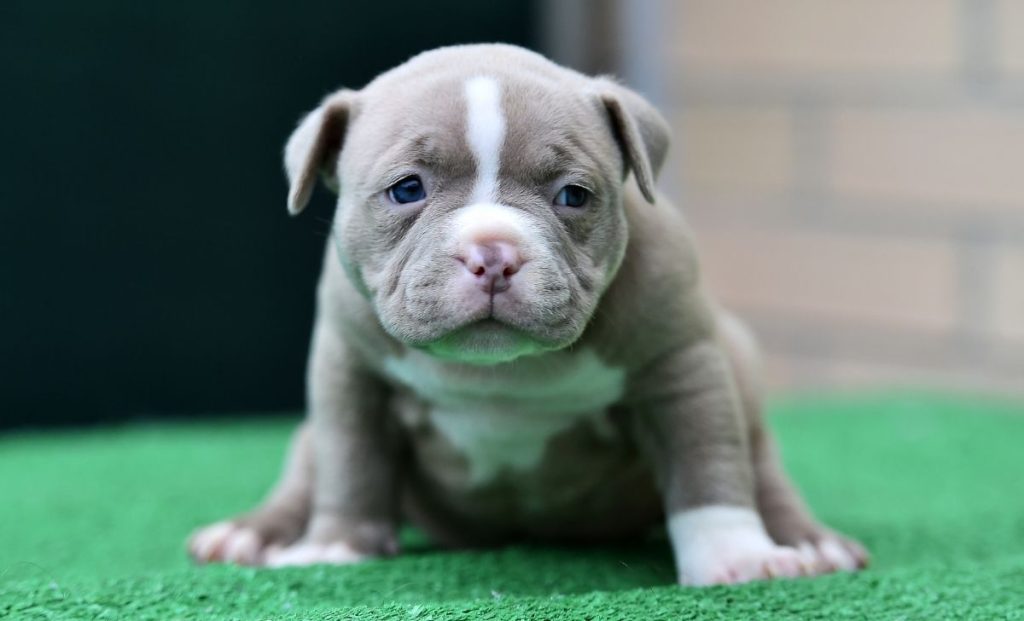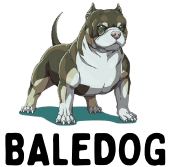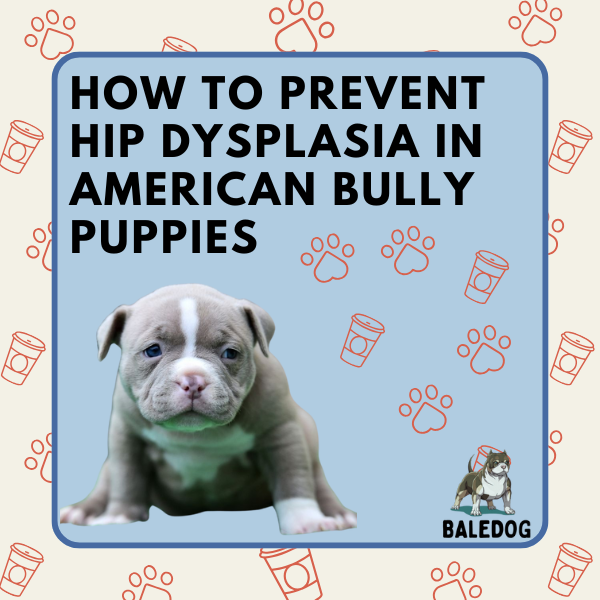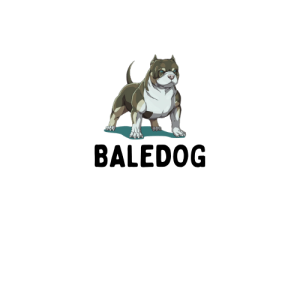If you’ve just brought home an American Bully puppy or are thinking about adopting one, you’re probably excited about all the fun moments ahead. Bullies are awesome companions: loyal, energetic, and full of love. But before you get lost in all the cuteness, there’s one important thing you need to know about the breed: hip dysplasia.
Hip dysplasia is a condition where the hip joint doesn’t develop properly, which can lead to pain, arthritis, and eventually loss of movement. This condition can be genetic, so American Bullies are prone to it more than some other breeds. The good news is, there are things you can do to prevent it, or at least reduce the risk, right from when they’re puppies.

So, let’s dive into how you can give your puppy the best start in life and help them grow into a healthy adult dog with strong hips!
What is Hip Dysplasia?
Before we jump into prevention, let’s quickly talk about what hip dysplasia actually is.
In a healthy hip joint, the ball (the head of the femur) fits snugly into the socket of the pelvis (called the acetabulum). In dogs with hip dysplasia, the ball and socket don’t fit together properly. This can cause instability, which leads to arthritis, pain, and eventually problems with movement as they age.
This condition isn’t always easy to notice in puppies, especially at a young age. Puppies with hip dysplasia may not show signs of pain until later in life. That’s why preventing it before it becomes a bigger problem is super important.
Signs of Hip Dysplasia in American Bully Puppies
Hip dysplasia is often diagnosed later in life, but there are some early warning signs you can keep an eye out for. These include:
- Reluctance to exercise or play
- Difficulty getting up or lying down
- Limping or bunny-hopping (especially after exercise)
- Swaying or a “bunny hop” walk when running
- Stiffness or trouble climbing stairs or jumping onto furniture
- Pain or discomfort when their hips are touched or manipulated
If you notice these signs, especially in a puppy that is still growing, it’s worth talking to a vet. Early diagnosis and treatment can go a long way.
But even if your pup isn’t showing these signs, there are proactive steps you can take to lower the chances of hip dysplasia. Let’s dive into those!
1. Choose a Responsible Breeder
It all starts with the breeder. If you want a healthy puppy, the first step is choosing a responsible breeder who focuses on breeding healthy dogs, not just breeding for appearance or popularity.
A reputable breeder should provide:
- Health testing for genetic issues like hip dysplasia in the parents. Make sure the parents have good hip scores from a recognized organization, like the Orthopedic Foundation for Animals (OFA) or the PennHIP.
- Genetic screening to minimize the risk of hereditary conditions.
- Clear medical history for both the sire (father) and dam (mother) so you can see if any issues have cropped up in the lineage.
When in doubt, ask the breeder to show you proof of the parents’ health certifications for hip dysplasia, elbow dysplasia, and other potential genetic issues. A good breeder won’t hesitate to provide this information.
By selecting a breeder who prioritizes health, you’re already taking a big step toward preventing hip dysplasia in your puppy.
2. Maintain a Healthy Diet
Nutrition is a huge factor in preventing hip dysplasia. Puppies go through rapid growth stages, and providing them with the right nutrients during these formative months is essential.
A. Don’t Overfeed!
Puppies, especially in the large breeds like American Bullies, are prone to overfeeding. While it’s tempting to give your puppy extra food, especially when they look so cute and hungry, overfeeding can lead to rapid weight gain and too-fast bone growth. This puts extra stress on their developing joints, which can increase the risk of hip dysplasia.
- Follow the feeding guidelines on your puppy’s food packaging, but also listen to your vet about how much food your puppy needs based on their specific age, weight, and activity level.
- Avoid free feeding, where food is always available. Instead, feed your puppy at specific times throughout the day to prevent overeating.
B. Choose the Right Food
Pick a high-quality puppy food designed for large breed puppies. These formulas are specially created to support healthy bone and joint growth. Look for foods that contain:
- Balanced calcium and phosphorus: Too much calcium can cause rapid bone growth that puts stress on joints. The right balance is crucial.
- Omega fatty acids: Omega-3s (like those from fish oil) support joint health and inflammation.
- Glucosamine and chondroitin: These compounds help maintain joint health and improve cartilage. Many high-quality puppy foods for large breeds contain these as key ingredients.
3. Moderate Exercise (But Don’t Overdo It)
It’s essential to provide your American Bully puppy with regular exercise, but not too much. Over-exercising your puppy, especially during their growing stages, can put stress on their joints and increase the risk of hip dysplasia.
- Avoid high-impact activities (like running on hard surfaces or jumping from heights) until your puppy is fully grown. Puppies should not be engaging in activities like jumping off furniture, running up and down stairs, or running at high speeds for long periods until they are physically ready.
- Short, controlled walks are great for exercise. Playtime with soft toys in the yard or inside is also good for building muscle and coordination without putting strain on their joints.
- Keep an eye on their growth rate. Rapid growth can make puppies more susceptible to joint issues, so be mindful of how fast your puppy is growing. If they’re growing too quickly, you may need to adjust their food intake or exercise levels.
4. Avoid Hard Surfaces and Stairs Early On
American Bullies are heavy, muscular dogs, so jumping and running on hard surfaces like tile, concrete, or asphalt can put unnecessary strain on their developing joints. Soft surfaces like grass or carpet are better for their growing bones.
Similarly, avoid letting your puppy climb stairs until they’re old enough. Stair climbing puts a lot of stress on their hips and knees, especially in the early stages when their joints are still developing.
If you live in a multi-story home or apartment, try using baby gates to block access to stairs until your puppy is strong enough to navigate them safely.
5. Regular Vet Check-ups and Monitoring Growth
Taking your puppy to the vet for regular check-ups is key to monitoring their development. Your vet can keep an eye on their weight, growth patterns, and overall health to help catch any signs of hip dysplasia early.
- X-rays: If your vet suspects hip dysplasia, they may take X-rays to evaluate the development of your puppy’s hips.
- Joint supplements: Some vets recommend joint supplements (like glucosamine and chondroitin) for puppies that are at higher risk for joint issues. These supplements can be added to their food to help support healthy joint development.
Make sure to schedule regular visits, especially during the puppy stage, so your vet can track your puppy’s development and ensure that everything is on track.
6. Maintain a Healthy Weight
One of the easiest ways to reduce the risk of hip dysplasia later on is by keeping your American Bully puppy at a healthy weight.
- Obesity and excess weight put a lot of stress on the joints, especially in large breeds. Maintaining a healthy weight helps prevent unnecessary strain on developing hips and joints.
- Keep your puppy active with walks and gentle play but avoid overfeeding. If you notice that your puppy is gaining weight too quickly, talk to your vet about adjusting their food or exercise routine.
7. Consider Joint Protection Products
There are also some joint protection products that can help prevent hip dysplasia in the long run. These products can be especially helpful for puppies at higher risk.
- Joint supplements: As mentioned earlier, you can give your puppy glucosamine and chondroitin to support cartilage and joint health.
- Orthopedic beds: Make sure your puppy has a comfy and supportive bed, especially as they grow. Beds with memory foam or orthopedic support help reduce pressure on their joints.
8. Create a Safe and Comfortable Environment
Your puppy’s living environment can also play a huge role in their overall joint health. While you’re focusing on exercise and diet, it’s equally important to make sure their surroundings are conducive to proper growth and development.
A. Avoid Slippery Floors
Slippery surfaces can be dangerous for growing puppies. Because American Bullies are muscular and stocky, sudden movements on slick floors can strain their hips and joints. To prevent this, consider adding non-slip rugs or mats on tile, hardwood, or laminate flooring. This gives your puppy more grip and can reduce the chance of slipping and potentially injuring themselves.
B. Create a Safe Play Area
Since your puppy is still growing, it’s important to create a safe space for play and exploration. Whether it’s a designated area in your home or a fenced-in yard, ensure that your puppy has room to move around without the risk of overstretching or twisting their hips.
This space should be free from any sharp objects or hazards that could cause injury. It’s also important to avoid areas with too much jumping or rough play (especially with older dogs) that could lead to unnecessary strain on developing joints.
9. Training Tips for a Healthy Puppy
Training your American Bully puppy not only helps them develop into well-behaved dogs, but it can also have a positive impact on their physical health. While most training is about mental stimulation, some aspects of training can help prevent injury and encourage proper growth.
A. Focus on Controlled Movements
Teach your puppy how to move gently. American Bullies are strong dogs and sometimes their excitement can lead them to make sudden, sharp movements. Whether it’s playing or learning basic commands, encourage calm and controlled movements.
- For example, teaching your puppy to sit, stay, and lie down on cue is great for building focus and controlling energy.
- Avoid activities that might encourage jumping or rough play that puts undue stress on their developing joints.
B. Gentle Leash Training
Leash training can be a fun bonding experience, but it’s also important to make sure you’re not pulling or jerking on the leash while training. Instead, teach your puppy to walk calmly by your side, which will prevent any sudden jerks that might strain their hips or spine. Start by using a soft harness instead of a collar, as this reduces pressure on their neck and joints.
10. The Importance of Socialization
Although socialization doesn’t directly affect hip dysplasia, it plays a major role in your puppy’s overall well-being. A well-socialized dog is a happier, more confident dog, and less likely to be stressed or anxious. Stress and anxiety can sometimes exacerbate joint pain later in life, so the more relaxed
your puppy is, the better. Socialization also helps prevent behavioral issues that could lead to accidental injuries.
A. Gradual Exposure to Other Dogs
Introducing your puppy to other dogs and people in controlled environments is important. But remember, don’t overdo it in the early stages. Since American Bullies are muscular dogs, too much rough play with other dogs, especially bigger or more boisterous ones, could put undue pressure on their hips. Opt for gentle playdates with puppies that are closer in size and energy level to prevent injuries.
B. Expose to New Environments
Taking your puppy to new places, whether it’s different areas of the park or walks around the neighborhood, helps them get used to various environments and builds their confidence. Low-impact activities like walking on grass, sitting in quiet places, or exploring new safe spaces help them grow mentally and physically, without putting extra stress on their developing joints.
11. Keep Stress Levels Low
We often think about a dog’s physical health, but emotional well-being is just as important, especially in a breed like the American Bully, who thrives on bonding with their owner. Stress and anxiety can contribute to muscle tension and could indirectly impact your puppy’s joint health.
A. Provide a Safe, Quiet Space
Give your puppy a quiet retreat where they can rest and recharge without too many distractions. This safe space will allow them to retreat when they need rest and will minimize the stress that can come from too much stimulation.
B. Use Relaxing Techniques
Consider using calming tools like pheromone diffusers or calming music designed for dogs to reduce anxiety. You can also try gentle massage techniques to help ease muscle tension, but always ensure you’re being gentle around the hips and joints.
12. Invest in a Good Pet Insurance Plan
While we’re all hoping for the best, it’s always a good idea to be prepared for the unexpected. Pet insurance can help you manage the cost of potential health issues, including hip dysplasia if your American Bully develops it later in life.
Look for a plan that offers coverage for hip dysplasia and other hereditary conditions. Even if your puppy doesn’t show any signs of hip problems now, having insurance can help offset the cost of treatments like physical therapy, medications, and possibly surgery in the future.
Final Thoughts: A Healthy Puppy Equals a Happy Life
Preventing hip dysplasia in American Bully puppies requires a combination of good breeding, nutrition, moderate exercise, and health monitoring. It’s important to be proactive, starting from the moment you bring your puppy home. By focusing on creating a healthy environment, controlling their growth rate, and managing their physical activity, you’re helping your puppy grow into a strong, happy adult dog.
It might take a bit of extra effort, but when you see your American Bully running around with joy and living their best life, it will be all worth it. Remember, prevention is always easier than treatment, and by giving your pup the best possible start, you’ll set them up for a life full of play, adventures, and love.
Now, enjoy the cuddles, playtime, and all the sweet moments you’ll have with your little Bully. They’ll be your loyal companion for years to come!


